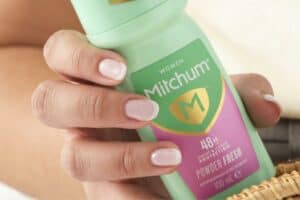Retinol is all the rage in the world of skincare, but what is it, when do you use it, what can it do for you and when should you avoid it?

Retinol is all the rage in the world of skincare but what exactly is it, what is used for, who should try it and what benefits does it have?
The Citizen recently reached out to the qualified skin professionals over at optiphi to discuss all things retinol and break down this popular skincare ingredient for you.
What is retinol?
Retinol, also known as vitamin A, is a vitamin in the vitamin A family found in food and is often used as a dietary supplement.
The use of retinol in skincare began all the way back in the 1970s when a famous American dermatologist at the University of Pennsylvania, in the US, named Dr Albert M Kligman discovered tretinoin (retinoic acid) for the treatment of acne.
Over the years, it became the preferred ingredient to use in professional environments such as spas, aesthetic clinics and dermatologist’s practices.

According to optiphi, the most popular version of vitamin A found in skincare products is called retinol and there are different forms of retinol.
“Retinol promotes cellular rejuvenation and significantly reduces the appearance of fine lines and wrinkles. This powerful active stimulates collagen, elastin and hyaluronic acid production, revitalising cells from within, for optimal prevention of skin ageing.”
Different types of retinol
In order to use any form of topical vitamin A, the skin must convert it first into retinoic acid.
“Retinyl palmitate must be broken down into retinol, then retin aldehyde and finally retinoic acid. Retinol is the purest form of vitamin A, and about 20% more potent than retinyl palmitate,” explained optiphi.
The brand added that there are also various types of esters, which are derivatives of vitamin A, that are often described as retinol: Retinyl Acetate, Retinyl Linoleate, Retinyl Palmitate and Retinyl Proprionate.
“It’s important to remember that all vitamin A derivatives must convert to retinoic acid. Their effectiveness depends on how many times it needs to be broken down in order for the skin to use it.”
What is retinisation?
Retinisation is the process of gradually getting used to application of retinoid-containing products.
Retinoids may cause dry and flaking skin and possibly irritation. As a result, optiphi says it is important to gradually introduce whatever product you may be using to your skin and slowly increase the dose.
“Should you be prone to irritation, we recommend you start in summer.”
Benefits of retinol (vitamin A)

- Reduces hyperpigmentation, assisting in creating an even skin tone
- Restores photo-damaged skin, improving the appearance of dark spots and sun damage
- Stimulates protein synthesis, encouraging the skin to improve its structure and durability, increasing collagen and elastin contributing to a firmer amore elastic skin.
- Normalises sebum production, balancing the skin and encourages a clear complexion
- Improves barrier function in turn boosting skin vitality and health
Optiphi has a range of products containing retinol and have recently applied an innovative Time-Controlled Diffusion technology to their products.
ALSO READ: Three easy skincare tips to try that’ll change your beauty routine
“This technology safely delivers the pure retinol to the skin in a controlled and slow-release process. In this way the retinol is protected and remains stable within the formulation and the retinisation effect is reduced and the benefits are prolonged, offering enhanced results.”
The brand claims that the controlled, slow release of retinol allows the skin to absorb the retinol slowly. This is said to reduce the irritation often associated with introducing retinol to the skin.
“Once the retinol has been delivered to the skin, the delivery system offers the skin an additional barrier, assisting in protecting the skin from external factors like free radicals and pollution.”
Side effects of retinol
According to Healthline, people who use retinols commonly experience dry and irritated skin, especially after using a new product. Other side effects may include redness, itchiness, and peeling skin.
The website advises applying retinol 30 minutes after washing to help reduce skin irritation.
“Another possible solution is to decrease the application to every other day and gradually build up your skin’s tolerance to retinol before moving to daily use,” wrote Healthline.
Another thing to consider when using retinol is that it is best to apply it at night as the product may increase the risk of sun sensitivity.
Retinols also aren’t recommended for pregnant women as they may increase the risk for birth defects and miscarriage.
Consult a doctor about retinol if you think you’re pregnant or are planning on getting pregnant at some point in the near future.
It is also advisable to avoid using retinol if you have an active eczema rash, as it may aggravate the rash.
When to use retinol
Although it is the preferred ingredient of people dealing with signs of aging and hyperpigmentation, Glamour Magazine advises using retinol even if you don’t have acne or fine lines and wrinkles, as the ingredient can help maintain an even skin tone and give your skin that elusive fresh-from-the-spa glow.
READ NEXT:






